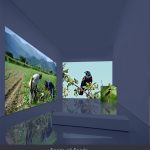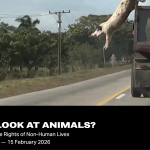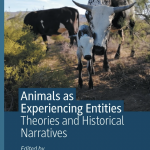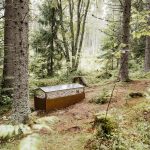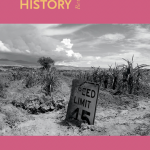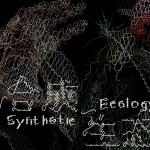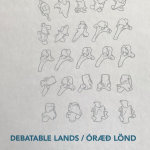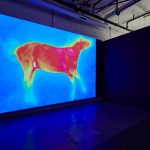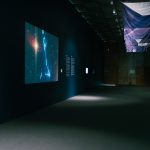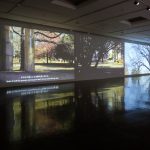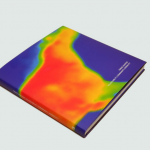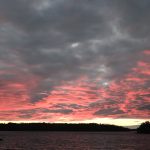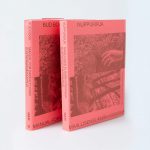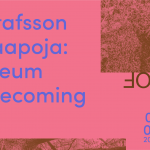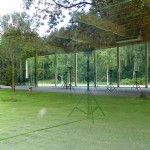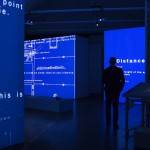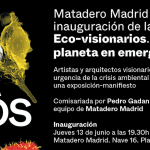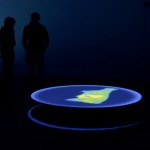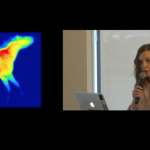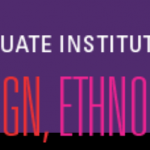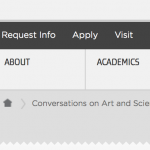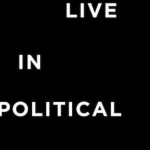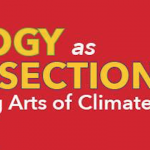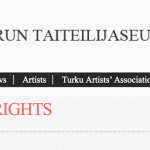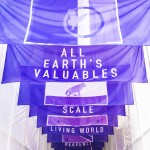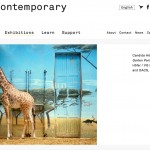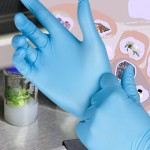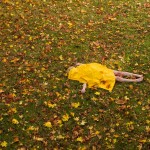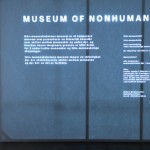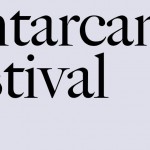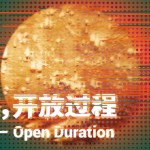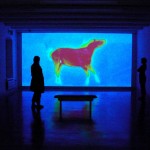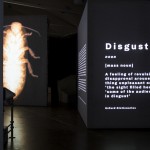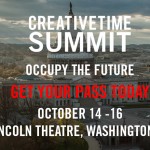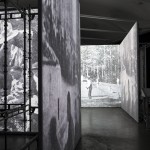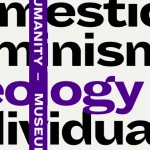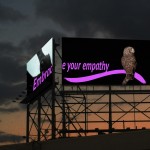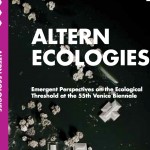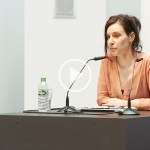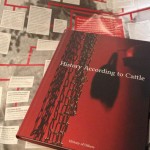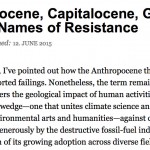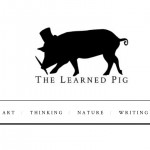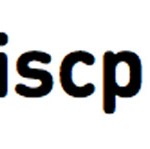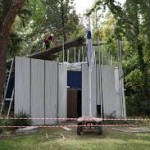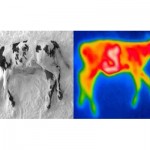Essay, commissioned for AISTIT – senses, Berlin-Helsinki-Paris, 2021
Download essay as a booklet
Writing on the conditions of possibility for totalitarianism, Hannah Arendt notes that, while isolation is necessary for stripping people of political power, isolation itself does not lead to a total eclipse of freedom.1 Isolation, she writes, is in fact necessary for thinking, for when isolation takes the form of solitude, it is a place not of loneliness but of “being together with oneself”, of being “two-in-one”, a place where the world accompanies the individual in her inner dialogue. But isolation is solitude only insofar as she can return to the world of others and through their recognition become again one, an irreplaceable individual who can contribute to the collective work of world-building. It is when “the most elementary form of human creativity, which is the capacity to add something of one’s own to the common world, is destroyed” that isolation becomes loneliness.2 While isolation concerns only political participation, loneliness concerns one’s life as a whole. Totalitarian domination thus “bases itself on loneliness, on the experience of not belonging to the world at all”.3
We have learned to think that to be free is to live an unbound life. But it is not detachment that makes us free: only belonging can give us freedom. In his analysis of the origins of money, David McNally describes the state of the enslaved person in Ancient Greece as total “deprivation of communal belonging”.4 Natal alienation, disconnection from land and culture, repeated cutting off of whatever fragile social bonds the enslaved person had been able to establish renders them ‘orphans’ or what was later commonly described as ‘socially dead’. The unfreedom of the enslaved, McNally writes, is “sealed in their juridical inability to ever become “kin””.5 Yet, enslavement is not the only form of unfreedom. “Some people,” notes Judith Butler, “work for the common world, keep it going, but are not, for that reason, of it.”6 Those trapped outside of belonging form the foundation of society, yet remain unacknowledged, like the invisible hands of a puppeteer that make the figure on the stage act seemingly on its own.
Yet, throughout the history of Western thought, it is the apparently self-sufficient individual that is registered as the only actor on the stage. Enlightenment political theorists imagined how organized societies arose from a violent and unruly state of nature in which every man was for himself only, and every encounter a competition for survival.7 Analyzing this narrative, Butler notes how the subject of these origin stories has already been imagined as a full-grown man who was never a child and never needed anyone to care for or shelter him.8 The figure that serves as the model for humanity appears as already gendered, adult and independent. Further, the primary relation this figure has with others is conflict, which begins immediately when others – they, too, male and adult – enter the stage. “Dependency,” Butler writes, “is written out of the picture of the original man.”9 What constitutes the prehistory of this prehistory is the annihilation of those – women, the enslaved, the natural world in its totality – who support this figure; an act of “inaugural violence”, not a tabula rasa but “a slate wiped clean”.10
Completing this picture, Butler notes, requires acknowledging that, even though we are creatures who constantly imagine we are self-sufficient, “we are all born into a condition of radical dependency.”11 We all start by being “given over to some other set of hands” before we can make use of our own. This is not a condition only of the infant but rather intensifies throughout our life and our dependence on society. “No one moves or breathes or finds food who is not supported by a world that provides an environment built for passage.”12 This shared, radical dependency forms a web of interdependencies that makes it impossible to clearly state where “I” end and the “other” begins, since my existence is materially bound up with the existence of the other.
Interdependency, the fact that we exist relationally, does not erase conflict from the picture. Butler stresses that it is exactly this relationality and dependency that charge social life with a latent aggression. We need others as much as we need our individuality and autonomy, and the tension between the two constitutes a bond that generates anxiety as much as it generates affection and solidarity. In the architecture of the psyche, love is not the opposite of hate, writes Butler in reference to the work of psychoanalyst Melanie Klein.13 Love and hate are rather expressions of this tension, which is why often where love is most intense, so is hate. We physically need the other in order to survive, which induces in us a fear of losing this crucial resource; a fear that so easily turns to aggression.
If belonging is what gives us freedom, then loneliness, isolation and exclusion are modes of unfreedom, as is being bonded against one’s will. Thus, substituting the story of individualism with one of interdependency does not automatically lead us towards freedom. If we are always already “given over”, as Butler writes, then the question of freedom concerns the character of our relations. How are we to bond in ways that give us freedom?
***
While Butler’s focus is on mechanisms of violence on a societal scale and on an attempt to build an ethical theory of nonviolence as political power, Nonviolent Communication, a method developed by psychologist Marshall Rosenberg, asserts that nonviolence starts by establishing an empathetic relationship with oneself.14 In Rosenberg’s vocabulary, violence refers to coercive communication patterns that precede and often lead to physical violence. In the framework of Nonviolent Communication all human action derives from attempts to have our emotional, social or physical needs met. De-escalating the violent potential of the bonds of relationship requires that we first learn to acknowledge our needs and to empathize with ourselves. Since we are dependent on others in order to survive and flourish, needs are “life in action”, an authentic experience of interdependent beings, not neediness that must be repressed. Only through understanding what our emotional reactions tell us about our needs, and what the reactions of others tell us about their needs, can we connect with them in a way that “makes empathetic giving possible”.15 While we have been taught what Rosenberg calls “a language of domination” that is based on judgement, shaming, punishment and reward, these gestures in fact disable genuine connection and most often leave us with our needs unfulfilled. Rosenberg’s claim is that within non-physical interaction, nothing another person does can make us feel something. Our feelings are reactions to our own needs, and judgement and aggression are “tragic expressions” of needs not met.16 When we learn to relate to our own needs empathetically and to take responsibility for them, we are able to approach the other not with demands and coercion, but with a request to attend to our need, if they are willing.
The method pays little attention to structural mechanisms and inequalities that often underlie and even generate conflicts. As such, it can appear depoliticizing. But it addresses a core paradox that modern subjects experience: that we have internalized a narrative of individualism and competition, while in reality our emotional and material well-being is dependent on the well-being of our relationships. Further, the narrative of individualism places the burden of survival on the shoulders of the individual in a world where the structures of power and economics that determine our lives are almost unreachable for a single person. Such a cult of individualism does not empower us, but instead is deeply infantilizing and leaves us feeling helpless and void of agency. In the light of Nonviolent Communication, freedom does not mean that we do not need anything from others, but that we respect their agency and freedom to give by choice, not by obligation, and that we have agency in our relationships with them in return. The political potential of Nonviolent Communication lies in restoring interpersonal relations so that we are able to connect authentically, in order to build a common world that is not based on coercion.
Rosenberg’s approach expands the areas we usually understand as being subject to consent. Here, consent is what has to be considered in all interpersonal interactions. It is, in fact, astonishing to realize how much of our interactions with family, loved ones or peers is structured around implicit forms of coercion. Punishment, judgement and shaming are considered legitimate ways of pressuring another into fulfilling our needs, while, as Rosenberg reminds us, rewarding is just another side of this coercive mechanism.
Conversations around consent in sexual interactions – the one area where there is a growing consensus that coercion is not okay – have, however, shown how negotiating consent is difficult because of our lack of training regarding boundaries. As artist, somatic sex coach and educator Melanie Bonajo points out, women and femmes tend not to know their own boundaries because they have been socially conditioned to exist in servitude to cis men.17 This is also true of those who are marginalized or racialized in society: setting boundaries can be, and often is, life threatening. Agreement is not consent when not agreeing poses a bigger threat than allowing a transgression to happen. Rae Johnson and Nkem Ndefo remind us how what looks like consent can in fact be appeasement, which they define as “any relational behavior designed to pacify interpersonal threat” in situations of significant power imbalance.18 Appeasement is thus often a trauma response and a survival strategy. Conversely, those socially conditioned as men or white are taught not to pay attention to or take into account the boundaries of others. These conditionings make consent or the lack of it particularly challenging to identify. What is needed is not only explicit recognition of the power at work in any encounter, but also training in knowing where our own boundaries are, and how to communicate them.19
Paradoxically, while transgressions and violations of boundaries are being taken more seriously, we are still short of tools that would allow us to tackle transgressions without repeating coercive behavior. “Safe spaces” have entered the vocabulary of education and activism in an attempt to create areas of life where power imbalances concerning, for instance, race and gender are addressed and transgressions are not tolerated. But when transgressions do happen, they are often dealt with by banishment and shaming, in other words, by excluding the violator from the community as a punishment. In her essay Unthinkable Thoughts adrienne maree brown tackles the ways in which calling out and canceling have entered social-justice spaces as ways of handling transgressions. She stresses that, while both are necessary means for addressing harm and creating change – mostly when other means have failed or are out of reach because of a power imbalance – it is important to differentiate between conflict, harm and abuse.20 Addressing her words to movements for social justice, brown points out that “even if we have our mind set on freedom, we’re not free yet”.21Racism and sexism are the water we swim in and we will need each other in order to see our blind spots. Further, banishing a person from a group, community or organization might in fact only enable harmful behavior to continue in another context.
Getting rid of all potential hurt and harm in social spaces is also impossible because we can never be sure what safety means to different people. Instead of assuming that any space can be absolutely safe, the idea of a Brave Space, as outlined by Micky ScottBey Jones, starts from acknowledging that our work is always unfinished. In her poem Invitation to Brave Space she writes: “We will not be perfect. This space will not be perfect. It will not always be what we wish it to be. But it will be our brave space together and we will work on it side by side.”22 Echoing Rosenberg’s notion of being connected to “what is alive in us”, Jones refers to Brave Space as a space where we can be in touch with ourselves as complex human beings, while brown talks about creating spaces where we can be “honest representations of ourselves”. Authenticity and connection are thus essential for belonging, which in turn makes movements for justice strong and lasting. What matters more than perfection are ways in which communities are able to build practices of repair.
***
Both adrienne maree brown and Micky ScottBey Jones approach accountability and conflict resolution from an abolitionist standpoint. Neither suggests that keeping some space for complexity means that transgressions should go without consequences, but that getting rid of people is a violent mechanism of the carceral state that produces more violence, not less. Thus, as Jones says, while we have so internalized the idea that punishment equals justice that “we don’t know how to be in relationship with each other without punishment”,23 for an abolitionist just throwing people away if they make a misstep is simply not an option. The activist and organizer Mariame Kaba describes how the prison-industrial complex functions on a logic of judgement, punishment and exclusion that has become prevalent everywhere. Instead of acknowledging people’s needs, and restoring damaged relations, the justice system “criminalizes survival” and does nothing to end a culture that makes harm possible.24 Challenging the often-repeated argument for prisons and policing in the fight against rape and domestic violence, Kaba points out that so few perpetrators of these crimes end up with sentences that the system is practically void. More importantly, the prison system itself is a site of sexual violence, while more policing ends up criminalizing women who are already marginalized.25
Emerging from communities of color that have not had access to the justice system, or have not wanted to engage with it, the framework of transformative justice challenges the carceral state and its institutions of control that are ultimately built for protecting white supremacy and patriarchy.26 Not only does state-operated exclusion and punishment lead to targeting of groups whose survival has already been criminalized, but it bypasses the fact that perpetrators are often themselves survivors of the indirect violence of societal marginalization and dispossession, or of direct interpersonal violence resulting from it. When the same state that oppresses and disenfranchises people determines what counts as violence and who has a right to self-defense, the cycle of violence only expands, instead of diminishing. In building communal processes of repair and focusing on supporting survivors, the framework of transformative justice rejects the idea that a punitive system built and operated by a racist (capitalist) state could deliver justice. Instead, justice and safety can emerge when communal bonds are restored in such a way that people can have real agency in their relations.27
Violation is not only harm between individuals, but a rupture in the social sphere that requires communal attention. What emerges as central in this notion of justice is community as a site of commitment and accountability. While punishment is always coercive and non-consensual, and as such answers violence with more violence, accountability requires voluntary participation. Mariame Kaba stresses that accountability is something that needs to be taken: we cannot force someone to take accountability. We do not gain safety through more severe punishments, but “through building relationships that are strong enough to allow us to be able to take accountability when we cause harm.”28 In adrienne maree brown’s words, accountability is not a means of exclusion but instead “how we call each other into community”.29
Trust is not built when everything goes smoothly, but specifically in ruptures that reveal how willing, committed and ready we are to put in the work of repair. Transgression, when handled right, can then be a place of learning, not of permanent injury. And when repair and supporting survivors are the focus, the kind of healing that mere punishment never achieves on its own becomes possible. All of this requires time, training and basic security that allows for growth. Transformative justice is not an answer to everything, Kaba emphasizes: we also need universal health care, social security, education and other social safety nets that allow the allocation of both personal and communal resources for this crucial work of repairing relations.30 Abolitionism is thus not just a call for canceling the carceral system, but, in the words of Ruth Wilson Gilmore, “a theory of freedom”31 – not a freedom over others, but freedom to belong.
***
In a world shared by all kinds of beings, repairing relations is not a human-only issue. In a beautiful essay discussing gift economies, the botanist and enrolled member of the Citizen Potawatomi Nation Robin Wall Kimmerer writes how “thriving is possible only if you have nurtured strong bonds with your community”.32 Challenging the centrality of the notion of scarcity that is prevalent in mainstream Western economics, Kimmerer draws attention to the abundance of gifts from the natural world. Understanding a berry – as in her essay entitled The Serviceberry – as a gift rather than a resource changes our attitude to it: the exchange stops being mere taking and turns into a relationship where one gives while the other receives. Receiving a gift awakens in us a sense of gratitude, that opens up a space where “empathetic giving”, to use Marshall Rosenberg’s language, becomes possible. Reciprocity is not about paying back in equal amounts, but a gesture that grows out of a desire to enrich the life of the other in order for the shared world to flourish.
In a gift economy, wealth is increased by sharing, not by accumulating, because the real currency in a gift economy “is relationship, which is expressed as gratitude, as interdependence and the ongoing cycles of reciprocity.” The central unit of a gift economy is not “I” but “we”, since, in Kimmerer’s words, “all flourishing is mutual”. Kimmerer quotes Charles Eisenstein, who states that “Gifts cement the mystical realization of participation in something greater than oneself which, yet, is not separate from oneself. The axioms of rational self-interest change because the self has expanded to include something of the other.” In Kimmerer’s account, gift economies among humans are interwoven with ecologies of reciprocity, which is present in all nature, as collaboration has proven to be more essential for survival than competition.Competition, writes Kimmerer with reference to the findings of evolutionary biologist David Sloan Wilson, makes sense “only when we consider the unit of evolution to be the individual. When the focus shifts to the level of a group, cooperation is a better model, not only for surviving, but for thriving.”33
Understanding our relationship with the natural world in terms of gifts and reciprocity requires that we acknowledge that there is someone on the other side with whom we are in a relationship. Kimmerer describes how in her tradition, that of the Potawatomi, the world is not divided according to the hierarchical binaries typical of the Western worldview, but into animate and inanimate beings.34 Further, all nature, including water, air, or rock, is considered animate, while in her native language, Anishnaabe, inanimate grammar is reserved mainly for human-made artifacts. While many Western languages reserve personal pronouns only for humans and use “it” for everything else, Kimmerer says “it is impossible in our language to speak of other beings as “it”.” She proposes introducing a new pronoun, “ki”, that could be used to address all animate beings as persons. While Kimmerer draws the word from the Anishnaabe word “aki” that refers to land, she also points out that it resonates with the pronunciation of “qui”, the French word for “who”, and means “life force” in its different spelling “chi”. The plural of “ki”, Kimmerer suggests, would be the word “kin”, already familiar in English. This way “every time we speak of the living world we can embody our relatedness to them.”35
The dominant Western worldview has not only approached survival from the point of view of competition, but has also reduced the natural world to mere resources for human survival. As a resource, the natural world is seen only as objects to be consumed and stored, which has led to real scarcity in the face of pollution, species extinction and habitat loss. In this framework not only is the nonhuman realm in its totality referred to as “it”, but also in the eyes of the law it exists merely as an object of possession. While humans, too, occupy different tiers of belonging to the realm of legal rights, and that belonging is a site of constant struggle, the anthropocentrism of personhood is deeply engraved into the dominant Western culture. As long as nonhuman beings and entities exist outside legal or social notions of personhood, they also lack the right to have boundaries, and even the conditions of possibility for consent. The plants and animals, mountains, rivers and valleys of the world are dominated by perpetual coercion, sealed, to quote David McNally, “by their juridical impossibility to ever become “kin”.”36 In contrast, Potawatomi culture, writes Kimmerer, acknowledges that the animate world is inhabited by all kinds of persons. The word “people” then refers not only to humans but also to other beings and entities that belong to the community. To say that plants or animals are persons is not to anthropomorphize them by projecting human attributes onto them, she emphasizes.37 It is to recognize that they too have their own kind of awareness, consciousness and being-ness. As such, they too can be victims of transgressions and violence, and compensation and reparation should be offered to them directly. Justice, then, is achieved through regaining the balance between humans, community and land. “Recognition of the personhood of all beings,” says Kimmerer, “opens the door for ecological justice.”38
When all beings are seen as persons, consent becomes a central aspect of acting in the community. Writing in reference to traditional Anishnaabe knowledge Kyle Whyte, also an enrolled member of the Citizen Potawatomi Nation, describes how negotiating consent with the beings of the community is an integral aspect of governance, its aim being the coordination of the “interdependent mesh of relationships that connects beings and entities together” in a perpetually changing world. Since creatures and entities are their own sovereign beings, “their ability to self-determine their own actions for the sake of contributing to other’s well-being” needs to be respected. Referring to the work of Christie Sy and James Dumont, Whyte writes how abusing consent can “ruin the coordination of interdependent relationships.” Thus, humans are not the only ones with responsibilities, yet it is the responsibility of humans to act in such a way that other beings are able to fulfill their responsibilities in the community.39
Science is an important field for gaining the knowledge that is necessary for governance. Yet scientific research itself is regulated by norms around consent. In Western scientific practices, Kyle Whyte notes, consent is an important aspect of research ethics, often only when procedures are risky or harmful to the participants. Further, informed consent is required only from human participants (which has led to grievous violations of the consent of dehumanized populations throughout the history of Western science). Describing the philosophies of science in Anishnaabe, Salish and Haudenosaunee cultures, Whyte writes about how in these traditions science is inseparable from what he calls “governance value”. Since consent, transparency and trust are understood as key qualities of good practices of governance, they also need to be present in all scientific research practices. As a consequence, these traditions do not separate responsibility from empirical inquiry. In fact, non-`consensual research practices are irresponsible, and as such might not be considered proper research, because irresponsible actions cannot have governance value.40 The knowledge practices that Whyte and Kimmerer talk about approach the natural world as a teacher, not as an object of inquiry. Kimmerer, who is a professor of environmental sciences and whose writing moves between Western and Indigenous knowledge traditions, describes how Western science “polishes the gift of seeing”, but in many cases sees only the surface, the materiality, the morphology of a being. In contrast, the Indigenous traditions she refers to “work with gifts of listening and language”, attending to the relations of beings.41
Showing the violent consequences of equating seeing with knowledge for those who are subjected to this seeing, Ron Broglio describes how metaphors of violation are foundational to Western philosophy of science. In this tradition, Heraclitus’ famous claim that “nature wants to hide” is not followed by a desire to respect her will, but instead a desire to force her to lift her veil and reveal her secrets.42 It is no coincidence, then, that at the dawn of modern science, the interrogation of nature was carried out with an attitude similar to the witch hunts that targeted women who held traditional knowledge. Broglio quotes the renaissance philosopher Francis Bacon, whose ideal of the scientific method echoed inquisition trials of the time: “The secrets of nature are better revealed under the torture of experiments than when they follow their natural course.”43 In the Western tradition, then, coercion and non-consent are already inscribed in the premises of what counts as knowledge and how it should be extracted. As a result, Western science is a site of unimaginable suffering in the name of knowledge production, and also a site for socially conditioning participating humans to think of those subjected to research as mere instruments. In a world that is dominated by the interests of “I” over “we”, and where “we”, when applied, only refers to privileged members of the human community, the pursuit of science can become a tool for self-interest instead of being in the service of a truly common world. The often-cited political neutrality of science thus rests on a pre-determined value statement concerning for whom science is done. Negotiating consent also means accepting the limits of knowledge: not everything is there for us to take and possess as knowledge.
Foregrounding relationality means that negotiating agency and consent are essential in every area of life. The Sámi artist and activist Jenni Laiti describes how consent is also a fundamental quality of duodji, the traditional Sámi practice of craft and creativity, which embodies the Sámi relationship with land, language and culture. Laiti writes: “When I make duodji, I make more than an object or a piece – I create new life. In cooperation with the material, I discuss, communicate and create with love and from love. Each duodji has its own will, its own life.” The gift of creativity is not a characteristic of the individual but belongs to the whole community, because “None of us is a detached individual, but part of the whole. We are nothing without our community and our environment.” Thus, the freedom of art does not mean living without responsibilities. If freedom means communal belonging, then caring for the world that makes one free is one’s responsibility. The notion of consent brings with it the question of sovereignty – not only of beings and entities, but also of peoples. In reference to the ongoing colonization of Sápmi by the Finnish, Norwegian, Russian and Swedish States, Laiti asks: “Can Sámi art be free if we are not free to decide for ourselves on the fate of our people, to govern our own lives?”44
***
Political power relies on acting together, and acting together relies on our ability to nurture points of connection, solidarity and, most importantly, a sense of a polyphonic yet common world to which as many as possible feel they can meaningfully contribute. The foundation of political community is in belonging, and, as Arendt notes, the erasure of belonging creates fertile ground for ideology to march in and assert its logic.45 The crisis that we call capitalism is a crisis of belonging, in which merely executing the logic of economic neoliberalism has replaced political participation, and in which commodified platforms of interaction have replaced movement between togetherness and solitude (the two poles necessary for thinking, according to Arendt) with isolation and loneliness (that eventually make thinking impossible).
The origins of the cult of individualism are inseparable from the origins of capitalism. Dispossession of land, enclosure of the commons, negation of reproductive labor, and reduction of human and nonhuman beings to mere laboring bodies torn from their bonds to the land, ancestors, history or community are foundational to the modern forms of capitalism that structure our lives today. In return, we have been given “identities” and “freedom of self-expression” as a distraction from the fact that we exist in various states of unfreedom, some bonded as bodies of labor, some excluded as disposable, with even those who seemingly belong – the white, the privileged, the wealthy – isolated in their nuclear families and gated communities. The loneliness of modern life benefits investors, for it allows for commodification of relations as well as monetization of loneliness itself, in the form of selling back to us what has been stolen from us in the beginning. Brought back to the market as a commodity relation, belonging has become a luxury, and loneliness – while in fact produced by the same market economy that feeds on scarcity – a sign of the individual’s failure to succeed. Jill Lepore writes in The New Yorker how loneliness has become a pandemic that shares something essential with other pandemics of social marginalization.46 The shame that comes with loneliness and poverty, exclusion and dehumanization is anchored in a feeling of “not belonging to the world at all.”
Attachment theory, which came out of developmental psychology, asserts that humans are born with an innate need to form attachments. A stable connection with the caregiver establishes a safe base from which a child can explore the world, but if the caregiver is not available emotionally or physically, they can develop an insecure relationship with attachment, not trusting that their need for connection can be met. In adulthood, we seek to fulfill this core need for love and connection in intimate relationships, while often repeating the strategies we have learned in early childhood.47 An individualistic worldview that centers on exploration and self-actualization while dismissing attachment as non-essential for human well-being and survival, lays the ground for societies that are in themselves traumatizing. This trauma is manifested in an epidemic of self-harm and violence, which is then answered with a more severe cutting off of relations by the justice system. Mariame Kaba stresses that we need to get rid of the false dichotomy between survivors and perpetrators. More often than not, perpetrators are themselves survivors, and survivors are prone to becoming perpetrators.48 The framework of Nonviolent Communication in turn effectively makes us realize that it is precisely when we feel victimized, in other words, when our needs are not met, that we tend to resort to violent and coercive language. Aggression, to use Marshall Rosenberg’s words, is a “tragic expression” of needs not met, and so we inhabit a world where, lacking connection and belonging, and enraged by that lack, we are only taught to take what we need by force. What is “tragic”, of course, is that a connection cannot be made by force. Bodies can be bought, bodies can be forced, but a connection is possible only when it is given.
Attachment theory, Nonviolent Communication, and the work on transformative and restorative justice all center on a notion of authenticity as necessary for restoring relations harmed by a culture that does not teach us how to be interdependent. Authenticity, in the sense of being in contact with “what is alive in us”, as Rosenberg expresses it,49means being aware of our needs for connection and agency, love and exploration, independence and interdependency. Expressing these needs to others is frightening, because in doing so we risk our request, and thus the relationship itself, being rejected, and yet it is the only way we are able to connect in a way that is truly gratifying. To approach the world with force, punishment and negation of the other’s agency is to pre-emptively assume that love and connection will not be given voluntarily. This is a rapist’s logic, in which projecting one’s fear of being rejected turns into a hateful justification of violence. The world we exist in manifests this logic in all aspects of life, as if the dream was to force the world and its others into a submission so total that there is no one left to reject us anymore. In this dream, everything would be available, all bodies and pleasures, all things to try and explore without transgression, since there would be no one to assert boundaries, no one to negotiate consent with. Yet, in the process, what is destroyed is the condition of possibility for ever fulfilling our need to connect.
The primatologist Barbara Smutts writes that, while we normally think of personhood as an essential quality that we can “discover” or “fail to find” in another, personhood, as she frames it based on her decades-long research with primates and other animals, “connotes a way of being in relation to others, and thus no one other than the subject can give it or take it away. In other words, when a human being relates to an individual nonhuman being as an anonymous object, rather than as a being with its own subjectivity, it is the human, and not the animal, who relinquishes personhood.”50 For Smutts, personhood is something that does not precede the encounter, but instead is created together with the other. Personhood is something that emerges from a “voluntary, mutual surrender to the dictates of intersubjectivity”.51 What is essential here is the notion of surrender: an act of voluntary letting go of control, giving space, allowing the other to appear on their own terms without force or pressure. For you can only know someone if they allow you to know them.
And in spite of living in a world of coercion, a world of nearly total domination of nature and its beings, our need for deep connection with it remains, expressing itself in the abundance of stories that elevate consensual interspecies relations to mythical dimensions. We are honored, full of gratitude, shaken even, when a creature, from a world so harmed by our kind, desires to be with us, is curious about us, still trusts us. My Octopus Teacher, a film that on the surface appears to be a nature documentary, is in fact a story about what happens to a man when he opens up to the possibility of interspecies connection.52 It is he who changes, who lets himself love and be transformed by that love. What change happened in the woman who, as we see in a video circulating on social media, found a wingless bee and started to take care of it, only to realize that an emotional connection emerged, that the bee became a person, no less than herself?53 These are not instances of sentimental anthropomorphism, but manifestations of a repressed awareness of our relatedness. Why else would stories of such encounters form a whole cultural mythology that is now being updated from fairy tales to online archives and Hollywood movies. Because, deep down, we know, we remember, how amazing it feels when someone takes an interest in us and allows us to know them, desiring to share their world with us. In this open curiosity, devoid of judgement or demands and full of awe of the other, love and connection become possible.
Loneliness is grief, Jill Lepore writes, the grief of social animals that need to belong with others, whose physical and mental survival depend on their relations.54 Loneliness is how we experience a world that is no less relational, but in which relations of care and mutuality are turned to transactions, and encounters with others to object-relations that, paraphrasing Smutts, slowly erode our own personhood. Without the ability to nurture relations that can give us identity, history, future and agency, we are terrified of the fact that we, too, are becoming objects. There’s also a crushing amount of grief in witnessing and being complicit in a world that violently isolates, captures and destroys human and nonhuman life, severing our relationship to it in the process. Carol J. Adams observes that people’s reluctance to confront the horrors of animal agriculture and violence against nonhuman animals is rooted in our inability to deal with the overwhelming wave of grief that would follow that reckoning. Repression of that grief, she suggests, is a blockage on an individual level that disables us from connecting on a collective level.55 Removing that block could allow for compassion to flow, because grief is “a point of connection that destroys the structure of the absent referent” that hides violence in plain sight.56 Judith Butler notes that grievability is also a sign of belonging: public grieving means acknowledging as valuable life that might otherwise be disregarded as insignificant, a loss without loss.57 Grief is “a measure of our love, that grief compels us to do something, to love more”, says Kimmerer.58 In order to repair our broken relations, we need to first allow ourselves to grieve for what has been lost, to admit our need to connect and that, as Jenni Laiti writes, without others we are nothing and will not survive.59
Reaching out towards others comes naturally for beings, because being is about connection. Life itself, Carl Safina points out, is cultural: it consists of learning and communication, identification and local-specific customs and dialects that are as necessary for nonhuman survival as they are for human survival. Habitat loss does not just threaten the biological basis of life, but also the cultural traditions that teach new generations of individuals of all species how to live here, wherever “here” is.60 What makes us human is not our particular formation of limbs, sensory systems and cognition, but our particular embodied ways of connecting with others, our particular ways of telling stories about who we are, and our particular ways of sharing knowledge of how to live “here”. We, too, are, in adrienne maree brown’s words, “networked nature”, like mushrooms or forests or coral reefs.61 And what we share with other beings is their curiosity about their world and their storytelling capacity, which weaves us all into the great, ever-evolving semiosis of life.
When asked how not to feel powerless in the face of destructive corporate capitalism, Robin Wall Kimmerer says that, even if we do not have power over corporations, we have control over the stories by which we live. We have power because we have imagination. As long as we have imagination we are not powerless, because imagination is what allows us to create different narratives.62 These narratives might not be able to change the grand structures of the world right now, but they can guide us in building what Jenni Laiti refers to as anticapitalist and anticolonial spaces where relations are healed of their transactionary conditioning, and where bonds of reciprocity can be revitalized.63 Micky ScottBey Jones encourages us to work on micro infrastructures in local communities where transformative justice and accountability are practiced on a small scale, while Kimmerer talks of establishing intentional communities of mutual self-reliance and reciprocity that have sharing as their currency. “The move toward a local food economy is not just about freshness and food miles and carbon footprints and soil organic matter. It is all of those things, but it’s also about the deeply human desire for connection, to be in reciprocity with the gifts that are given you.”64 Creating these spaces has to take place side by side with helping defend those that already exist, which means standing in solidarity with Indigenous communities all over the world that are not only stewards of the land but also guardians of traditional knowledge of caring for relations. Because, as Sámi activist and director Pauliina Feodoroff reminds us, everything around us is still reaching out, willing to let us close. Referring to the struggle to revive the Skolt Sámi language and its inherent relationship with the land, she asks “what voice does the land listen to / by what words does she allow herself to be touched / what words or ways of speaking make her want to throw me out? / with what words will she pull me closer and let me be with her?”65
A world of freedom is not a world of detachment and individualism, but a world where neither coercion nor exclusion, the two modalities of unfreedom, dominate. A practice of freedom of this kind starts from home, for how can we restore our relations to Earth, if we do not even know how to do so with each other. Anchored in consensual bonds with all kinds of others, the other story, the story of belonging, can re-emerge.
Nothing inspires one to think about belonging more than an acute sense of the lack of it. I am grateful to everyone who has engaged in thinking about it with me across distances during the lonely months of the longest of years, and whose work expands from our conversations in directions that I hope I can keep learning from. Thank you: the generosity and insights of Jenni Laiti, who has introduced me to several texts discussed here, alongside her own work; Pauliina Feodoroff whose work has, through the more than 20 years of our friendship, opened up for me into a deeper understanding of our place in the world; Laura Gustafsson’s committed presence in my life as a thinking partner and friend; Heather Davis, Melanie Bonajo, Satu Herrala, Jason Pine, Anita Seppä, Jarkko Partanen and Noah Fischer for their work that feeds me like water feeds plants, as well as for their thoughts and suggestions on this text and beyond. Thank you for the proofreading to Mike Garner.
I’m writing this as a white person based in the settler colonial states of Finland and the U.S.A. In the essay I use “we” to refer to those who live within the paradigm of late capitalism in the West and its dominant narratives of individualism, consumerism and urbanization.
References
Adams, Carol, J, 1990: The Sexual Politics of Meat. London, New York: Bloomsbury Academic.
Arendt, Hannah, 1951: The Origins of Totalitarianism. New York: Harcourt, Brace and Co.
Bonajo, Melanie, 2019: adrienne maree brown lecture recording – KABK Studium Generale Series Wxtch Craft, October 29. 2020
https://vimeo.com/showcase/7649125 (24.4.2021)
Butler, Judith, 2020: The Force of Nonviolence. London, New York: Verso.
Butler, Judith, 2004: Precarious Life. London, New York: Verso.
Butler, Judith, 2021: Creating and Inhabitable World Means Dismantling Rigid Forms of Individuality. Time, April 21, 2021. https://time.com/5953396/judith-butler-safe-world-individuality/?fbclid=IwAR1U8WQg8hww_Sb9UpvbuWyCjzDdYJcSEfBn7iCGfF_jT3VRlrHhV36B-W0
Broglio, Ron, 2011: Surface Encounters. Minneapolis, London: University of Minnesota Press.
brown, adrienne maree, 2020: Unthinkable Thoughts. In: We Will Not Cancel Us. AK Press, Chico; 2020.
brown, adrienne maree, 2020: lecture recording – KABK Studium Generale Series Wxtch Craft, October 29. 2020 https://vimeo.com/showcase/7649125 (24.4.2021)
Cherry, Kendra: What is Attachment Theory. Verywellmind.com. July 17, 2019. https://www.verywellmind.com/what-is-attachment-theory-2795337 (24.4.2021)
Coetzee, J.M., 1999. The Lives of Animals. Princeton, New Jersey: Princeton University Press.
The Dodo, 2021. Woman and Her Rescued Bee Have The Sweetest Bond. https://www.facebook.com/watch/?ref=saved&v=211674950661553 (24.4.2021)
Erlich, Pippa and Reed, James (Dir): My Octopus Teacher. Netflix Original Documentary, 2020.
Feodoroff, Pauliina, 2021. Private conversations. For Feodoroff’s work, see: https://oca.no/venice-biennale/venice-biennale-2022-20220423/pauliina-feodoroff.1
Feodoroff, Pauliina, 2019. Aboagora, Turku, 2019. https://www.youtube.com/watch?v=D9AxG3X2GUc (24.4.2021)
Gersen, Jeannie Suk, 2021: The Politics of Bad Sex. The New Yorker, March 31, 2021.https://www.newyorker.com/books/under-review/the-politics-of-bad-sex (15.4.2021)
Gilmore, Ruth Wilson, 2020: Change: A World Without Prisons – Ruth Wilson Gilmore in Conversation with Mariame Kaba. https://www.youtube.com/watch?v=oeQmVpnRMYE (24.4.2021)
Hayes, Chris, 2020: podcast with Mariame Kaba | Why Is This Happening? Ep 51. MSNBC. January 8,2020.https://www.youtube.com/watch?v=VCS222xjAIA (24.4.2021)
Johnson, Rae and Ndefo, Nkem, 2021: When Agreement Is Not Consent. medium.com. January 26. 2021.https://medium.com/rae-x-nkem/when-agreement-is-not-consent-118e8d2f279e (12.4.2021)
Jones, Micky ScottBey, 2020: Invitation to Brave Space. In On Being Project, onbeing.org.https://onbeing.org/poetry/invitation-to-brave-space/ (24.4.2021)
Kaba, Mariame, 2019: Transforming Harm: Experiments in Accountability. Barnard Center for Research on Women, October 25,2019. https://www.youtube.com/watch?v=t0X6MdSDC4w (24.4.2021)
Kaba, Mariame, 2020 (1): So You’re Thinking About Becoming an Abolitionist. Medium.com, October 30,2020.https://level.medium.com/so-youre-thinking-about-becoming-an-abolitionist-a436f8e31894
Kaba, Mariame, 2020: Introduction. In: McDuff, Robin, Pernell, Deanne, and Saunders, Karen, 1977: Open Letter to the Anti-Rape Movement. Santa Cruz Women Against Rape. Santa Cruz.
Downloaded from: https://issuu.com/projectnia/docs/letter-to-the-antirape-movement (24.4.2021)
Kaba, Mariame: Transform Harm. https://transformharm.org/
Kaba, Mariame, 2021: We Do This ’til We Free Us. Chicago, Illinois: Haymarket Books.
Kelly, Kerry, 2020: Brave Space: Micky ScottBey Jones. ctznwell.org August 5, 2020.
https://www.ctznwell.org/ctznpodcast/brave-space-not-safe-space-micky-scottbey-jones (24.4.2021)
Kimmerer, Robin Wall, 2020: The Serviceberry. Emergence Magazine, December 10.2020.
https://emergencemagazine.org/essay/the-serviceberry/ (12.4.2021)
Kimmerer, Robin Wall, 2017: “Reciprocity”. The 28th Headwaters Conference, Center for Environment & Sustainability, October, 2017. Western Colorado University. https://www.youtube.com/watch?v=wisxnOgOlFo (24.4.2021)
Kimmerer, Robin Wall, 2021. The University of British Columbia, ) UBC Faculty of Forestry’s Forestry (Reads) series, 2021. Forest Reads: Braiding Sweetgrass. A Conversation with Dr. Robin Wall Kimmerer.https://register.gotowebinar.com/recording/1955565406781266955 (24.4.2021)
Laiti, Jenni, 2021: Art is Free When We Are Free. Kone Foundation website.
Laiti, Jenni, 2020: Care and Resurgence in an Apocalypse. Presentation at Yale, RebPsych, 12/11/2020.https://medicine.yale.edu/psychiatry/rebpsych/ (24.4.2021)
Lepore, Jill, 2021: The History of Loneliness. The New Yorker, March 30, 2021.
https://www.newyorker.com/magazine/2020/04/06/the-history-of-loneliness (15.4.2021)
Martin, Betty: https://bettymartin.org/ (24.4.2021)
McNally, David, 2020: Blood and Money. War, Slavery, Finance, and Empire. Chicago: Haymarket Books.
Poe, Marshall, 2021: New Books in Critical Theory. Podcast. Episode: Carol J. Adams, “The Sexual Politics of Meat; A Feminist-Vegetarian Critical Theory” (Bloomsbury, 2015). March 19, 2021
Rosenberg, Marshall B. 2015: Nonviolent Communication. Encinitas, CA: Puddler Dancer Press.
Safina, Carl. 2020: The call of the wild: how animals teach each other to survive. The Guardian, April 9. 2020.https://www.theguardian.com/environment/2020/apr/09/the-secret-call-of-the-wild-how-animals-teach-each-other-to-survive-aoe (24.4.2021)
Simpson, Jeffrey. A and Becks, Lane: Attachment Theory. Encyclopedia Britannica.https://www.britannica.com/science/attachment-theory (24.4.2021)
Smutts, Barbara, 1999: Reflections, p. 107-122. In Coetzee, J.M.: The Lives of Animals. Princeton University Press: Princeton, New Jersey, 1999.
Srivastava, Vinita, 2021: Don’t call me ‘resilient’ – it covers up systemic racism. Toronto.com. February 16, 2021https://www.toronto.com/opinion-story/10330423-don-t-call-me-resilient-it-covers-up-systemic-racism/ (24.4.2021)
Tippett, Krista, 2020: Robin Wall Kimmerer – The Intelligent Life of Plants. On Being Project.https://onbeing.org/programs/robin-wall-kimmerer-the-intelligence-of-plants/ (24.4.2021)
Young, Ayana, 2019: Mariame Kaba on Moving Past punishment. For the Wild podcast, episode 151.
Whyte, Kyle, 2020: Sciences of Consent. Indigenous Knowledge, Governance Value, and Responsibility. In: Routledge Handbook of Feminist Philosophy of Science. Edited by K. Intemann and S. Crasnow, 117-130. Routledge
1Arendt, 1951, 460-479
2Arendt, 1951, 475
3Arendt, 1951, 475
4McNally, 2020, 38
5McNally, 2020, 38
6Butler, 2021
7Butler, 2020, 30
8Butler, 2020, 36
9Butler, 2020, 37
10 Butler, 2020, 38
11 Butler, 2020, 41
12 Butler, 2020, 41
13 Butler, 202, 87-102
14 Rosenberg, 2015, 104, 129-135
15 Rosenberg, 2015, 1-14
16 Rosenberg, 2015, 16, 48-49, 61,
17 Bonajo, 2020
18 Johnson and Ndefo, 2021
19 The somatic sex educator Betty Martin specializes in consent in touch and intimate interactions. Martin´s Wheel of Consent is a set of instructions and methods for learning the skills of giving and taking in touch. See www.bettymartin.com for more details. In her review of Katherine Angel´s book Tomorrow Sex Will Be Good Again: Women and Desire in the Age of Consent (Verso 2020) Jeannie Suk Gersen writes that affirmative consent also has limits, because we often enter sexual situations not knowing what we want, and further, because sex can include moments where the knowing subject surrenders control.
20 brown, 2020, (1)
21 Brown, 2020, (2)
22 Jones, 2020
23 Kelly, 2020
24 Young, 2019, Kaba, 2020 (1)
25 Kaba, 2020 (2)
26 Young, 2019
27 See transformharm.org for resources on Transformative Justice
28 Kaba
29 Brown, 2020 (1), 2020 (2)
30 Kaba, 2019
31 Gilmore, 2020
32 Kimmerer, 2020
33 Kimmerer, 2020
34 Kimmerer, 2017
35 Kimmerer, 2017, 2021
36 McNally, 2020, 38
37 Kimmerer, 2021
38 Kimmerer, 2017
39 Whyte, 2020
40 Whyte, 2020
41 Kimmerer, 2020
42 Broglio, 2011, 3-5
43 Broglio, 2011, 5
44 Laiti, 2021
45 Arendt, 1951, 473-474
46 Lepore, 2021
47 Simpson and Becks, Cherry, 2019
48 Young, 2019
49 Rosenberg, 2015
50 Smutts, 1999, 118
51 Smutts, 1999, 118
52 Erlich and Reed, 2020
53 The Dodo, 2020
54 Lepore, 2021
55 Adams, 2021, zoom call with the author
56 Poe, 2021, Adams 1990
57 Butler, 2004, 36, 43
58 Tippett, 2020
59 In a private conversation, Jenni Laiti also reminded me that to expect “survival” to be the final goal seems to assume that living a good life is not even realistic. If life becomes mere surviving under oppression, it’s not even expected that people should thrive, and, as such, “survival stories” can help to normalize oppression. A similar argument is made in relation to the use of the word “resilience”. Vinita Srivastava writes how “continuously asking whole communities to be resilient in the face of police violence, land theft, lack of healthcare and job security can cover up many things, including ongoing state-sanctioned violence against Indigenous communities, and public health biases.” (Srivastava, 2021)
60 Safina, 2020
61 Brown, 2020, 9
62 Kimmerer, 2021
63 Laiti, 2020
64 Kimmerer, 2020
65 Feodoroff, 2020, 2017
